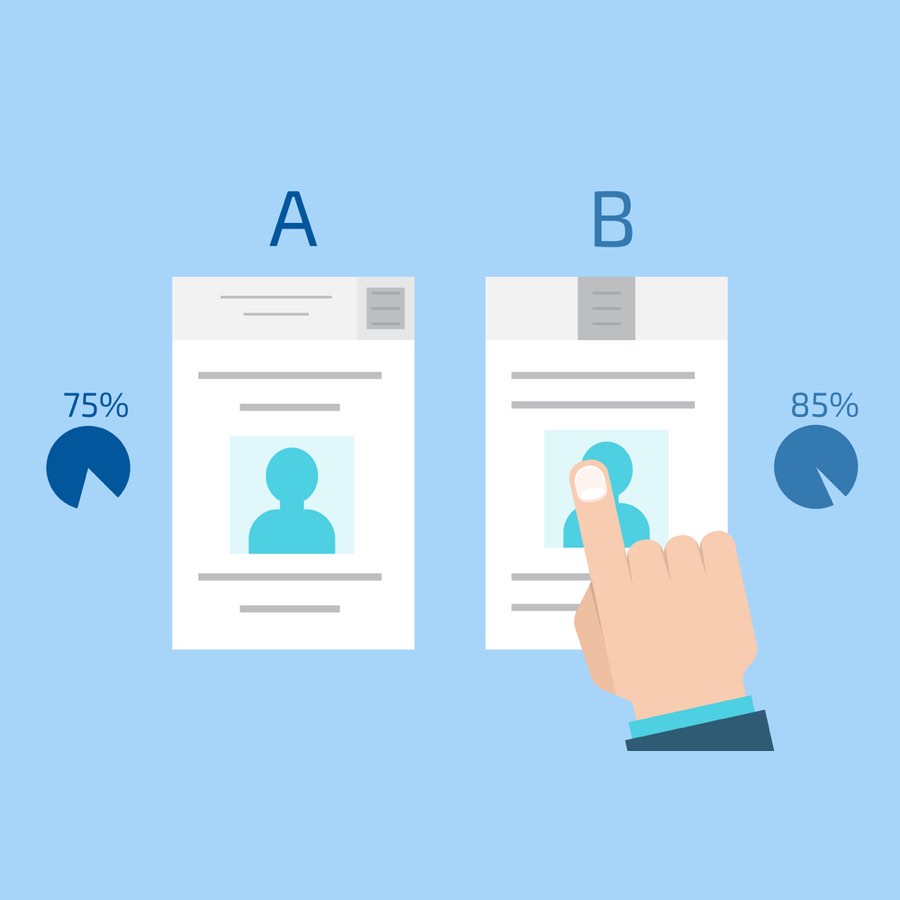
What Sets Robot-TXT’s PPC Specialists Apart?
When it comes to our PPC Services, we make use of a cyclical “flywheel methodology”. It’s a results-driven work method that consists of three phases:
- Discovery – during the initial stage, we identify possible areas of improvement on your campaigns.
- Optimisation – we analyse the data, formulate a hypothesis, implement the change and then test the two campaigns with an equal budget split.
- Analysis – we review the results and report on our findings, which will guide us in what to do next in optimising your paid search ads.
How A/B Split Testing Can Enhance Your PPC Campaigns
A/B split testing for PPC is a form of experimentation in which two variants of the same PPC ad or landing page are compared, with one particular variable element that is being tested. PPC split testing can measure the performance of several elements of your campaigns that can affect conversion rates. These can include ad headline or image, or the layout, call-to-action or form on your landing page, for example.
Conducted as part of the overall PPC optimisation process, A/B testing is a great way of identifying the variations in your PPC campaigns that prove effective. By getting confirmation on what works best, you can improve your PPC campaigns’ performance (and profitability).
Aside from optimising already live PPC ads, A/B testing can also be used for validation purposes before you roll out big campaigns. For example, suppose you’re planning on running a B2B lead generation campaign using an e-book. In that case, you can test different variations of the form on your landing page to validate which one will generate more leads – and use it for the main campaign.
How We Perform PPC Split Tests
Whether you are interested in PPC for business-to-business (B2B) or PPC for business-to-consumer (B2C), you need to know which campaign elements work the hardest in order to get the most from your advertising budget.
We do this by following these steps:
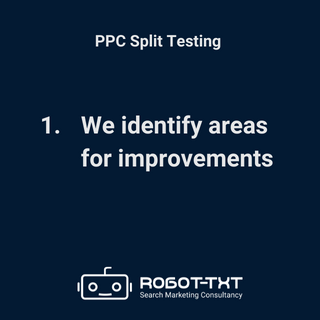
We identify areas for improvements
The ultimate goal of A/B testing is to optimise the performance of your PPC ads, so the best place to start is to identify elements where there is room for improvement. To do this, we need to identify which particular metrics we will be using to measure success.
Using Google Analytics and other paid and licensed analytical tools, we get a better understanding of the online behaviour of your targeted audiences.
One of the tell-tale metrics when it comes to PPC ad performance is the click-through rate (CTR) vs. conversion rate. CTR measures how many people clicked on your ad to visit your landing page, whereas conversion rate indicates how many of these visitors completed an action.
If your CTR is reasonably high but your conversion rate is low, we know that the PPC ad appealed to the user, but something on the landing page didn’t work.
There may be many reasons for this. To find the issue on your landing page, we dig a little deeper into the data. If, for example, we see that users clicked on the call-to-action button, but many abandoned the form, there may be too many fields in the form. Conversely, if the bounce rate (percentage of visitors who navigate away from the site without taking action) is high, it may be an indication that your landing page is not delivering on the promise made in the advert. In this case, it may be necessary to align your paid search ad’s messaging more closely to that of the landing page.
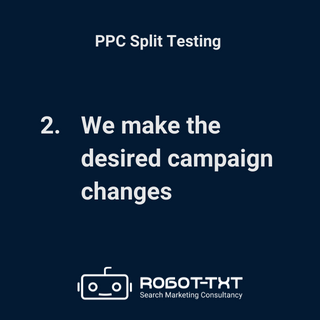
We make the desired campaign changes
We measure the data and form a hypothesis of the element (or elements) that can be improved. We then implement these changes, whether it’s your PPC ad’s copywriting that needs attention or your landing page call-to-action.

We test two campaigns with an equal budget split
Now that we’ve formulated a hypothesis and implemented the changes, it’s time to test our campaigns. In order to accurately test the original ad and landing page against the revised version, we allocate an equal budget to our two test campaigns. This way, all variables are eliminated, except for the one tested.
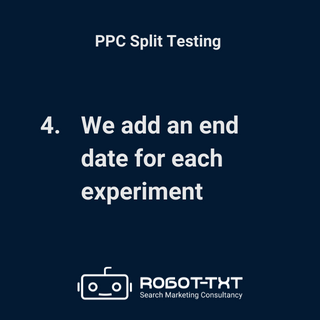
We add an end date for each experiment
Keeping in mind that it’s best to let PPC split tests run for at least a few days, or even weeks – depending on how much traffic you get, we add an end date for each test.
Since results can easily be skewed by an ad’s position, we monitor your ad closely during this time and adjust bids accordingly, if necessary, to make sure they don’t appear too low.
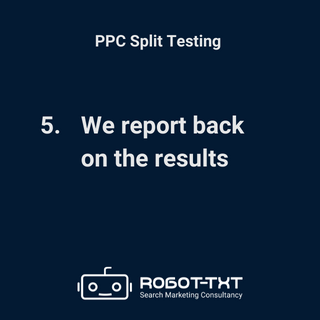
We report back on the results
The results, insights and conclusions of our testing are compiled into a PPC report, which will guide us in what to do next in optimising your paid search ads and improving your ROAS.
PPC split testing is a vital tool to ensure the success of your digital marketing campaigns. If you’d like to run more profitable paid search ads with a higher ROI, contact us today. With our PPC A/B split testing services, we can help you skyrocket the effectiveness of your pay-per-click campaigns.
